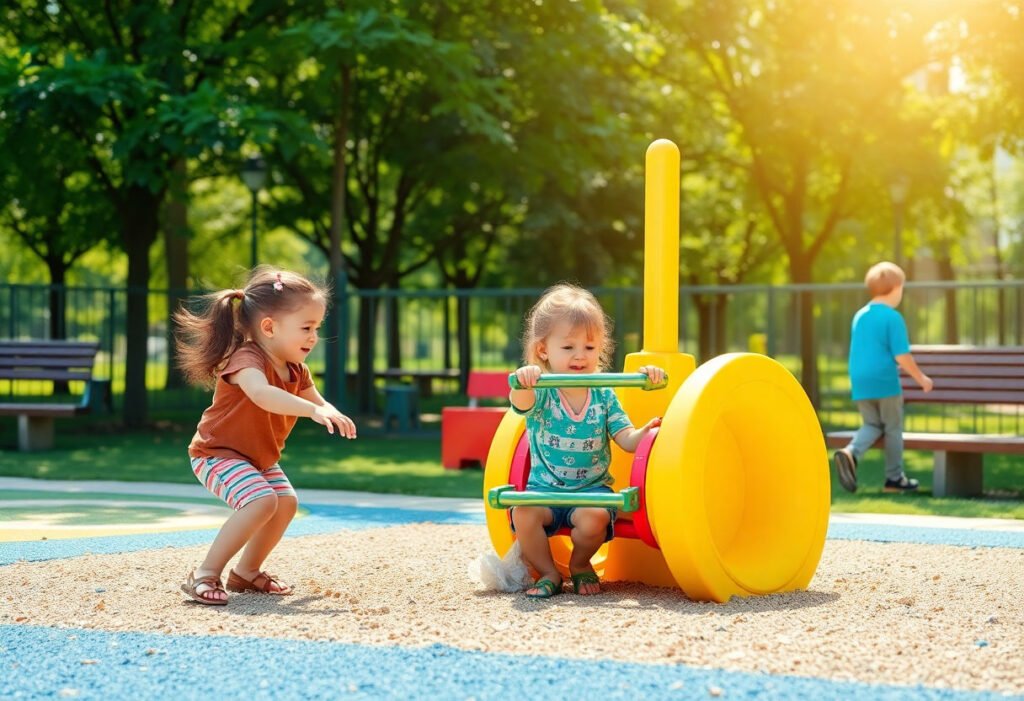Outdoor play serves as a foundational element in a child’s development, offering an invaluable blend of creativity and growth. By engaging in outdoor activities, children not only advance physically and socially but also unleash their imaginative potential. This article delves into a myriad of inspiring ideas, from crafting artistic creations with natural materials to embarking on exciting nature scavenger hunts. Each section is thoughtfully designed to encourage exploration, problem-solving, and meaningful social interactions. Outdoor play is more than just fun; it is a cornerstone of childhood that nurtures the body, mind, and spirit in a dynamic, enriching environment.
Key Takeaways
- Outdoor play is essential for fostering creativity, enhancing children’s ability to think imaginatively and solve problems flexibly.
- Engaging in physical activities outdoors not only promotes better health but also improves coordination and spatial awareness.
- Social interactions during outdoor activities build strong communication skills and foster collaborative play, essential for social development.
- Incorporating nature into playtime, such as through scavenger hunts or storytelling, encourages a deeper connection to the environment and nurtures curiosity.
- Organized playdates and DIY projects provide structured yet flexible opportunities for creative exploration, enhancing both individual and group play experiences.
The Benefits of Outdoor Play
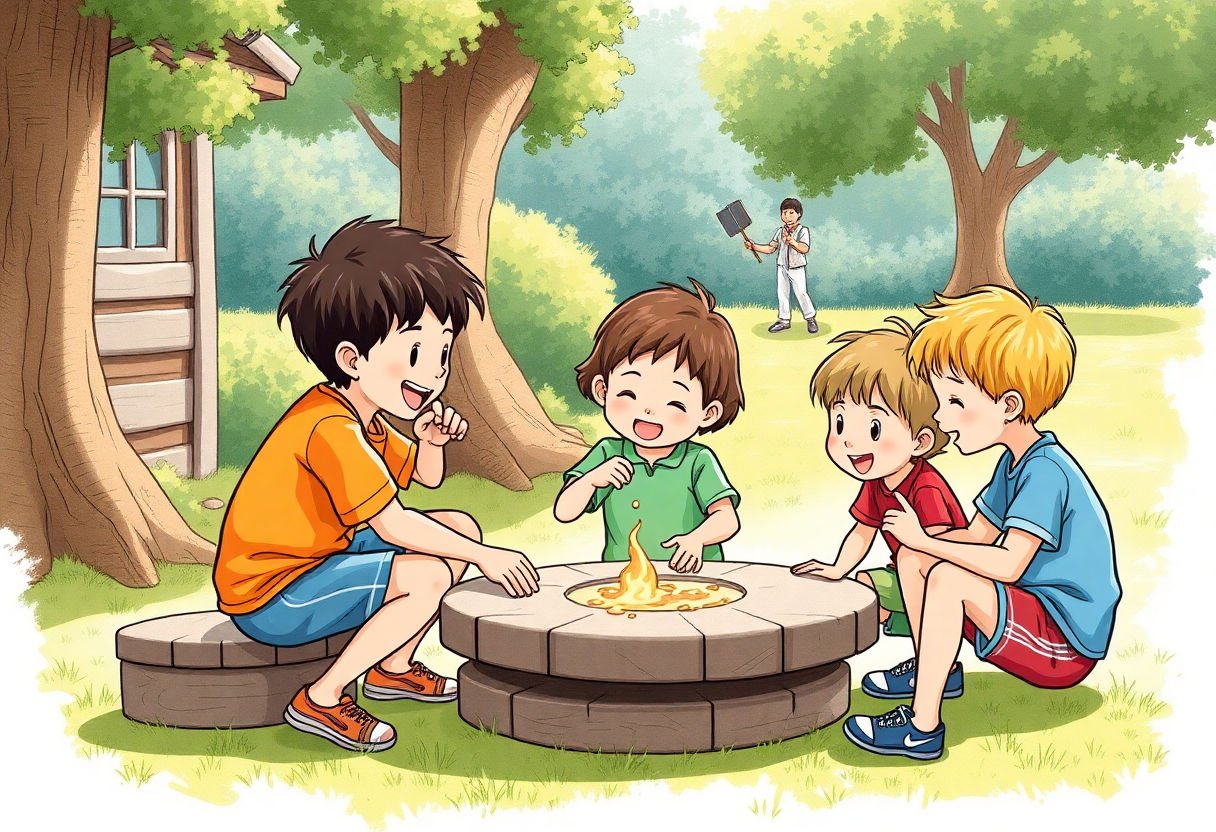
Outdoor play offers a myriad of benefits that are crucial for the holistic development of children. Physically, it provides essential exercise that helps build strong muscles and enhance motor skills. Activities like running, climbing, and jumping not only improve physical health but also contribute to a child’s coordination and balance.
Emotionally, outdoor play promotes mental well-being and reduces stress. Being in nature has a calming effect, allowing children to explore freely and express themselves. This sense of freedom helps cultivate self-confidence and emotional resilience. According to child development experts, “Children who engage with nature regularly show increased creativity and reduced symptoms of anxiety and depression.”
From a social perspective, playing outdoors offers invaluable opportunities for interaction. Kids learn to communicate, collaborate, and solve problems within groups. These interactions are key in developing social skills such as empathy, cooperation, and leadership.
Moreover, outdoor play encourages risk-taking in a safe environment. Children learn to assess and manage risks, which increases their autonomy and decision-making skills. This not only nurtures independence but also fosters a sense of responsibility.
Being outdoors often stimulates curiosity, with children observing various elements of nature. This curiosity translates into enhanced cognitive development, as children learn about their surroundings in an informal yet impactful way. They ask questions, make observations, and draw connections, thereby enriching their understanding of the world.
Therefore, integrating outdoor play into daily routines is indispensable for nurturing well-rounded individuals who thrive in diverse environments.
Create Engaging Nature Scavenger Hunts
Creating engaging nature scavenger hunts offers children an exciting way to explore the outdoors while fostering a sense of wonder and learning. The activity is both educational and fun, encouraging kids to engage with their environment meaningfully.
To design an effective scavenger hunt, start by selecting a diverse location—such as a local park, garden, or nature trail—that offers a variety of natural elements. The diversity will sustain the children’s interest and present a broader learning opportunity. Prepare a list of items or specific features for the participants to find. This list could include:
- Leaves of different shapes and colors
- Various types of rocks
- Signs of wildlife, like feathers or footprints
- Pinecones, acorns, or seeds
Incorporating elements of mystery and imagination can enhance the experience. For example, you could create a story around the hunt, suggesting that children are explorers in a faraway land tasked with discovering specific items to solve a mystery.
Utilize age-appropriate challenges to cater to different developmental stages. Younger children might search for colors or textures, while older kids could follow clues or solve riddles to find items. This approach not only suits varying abilities but also keeps the activity engaging for everyone.
Finally, emphasize the importance of respecting nature. Encourage children to look without taking, thereby instilling an early sense of environmental protection and stewardship. By integrating these elements into your scavenger hunts, you create not only an enjoyable outdoor experience but also a valuable educational opportunity.
Artistic Creations with Natural Materials
Crafting with natural materials offers children the opportunity to explore an array of textures, shapes, and colors directly sourced from the great outdoors. This process not only enhances their tactile awareness but also stimulates their imaginative capacities, fostering a deeper connection with their environment.
Engaging in outdoor art projects is a rewarding activity that turns simple materials into extraordinary creations. Children can collect an assortment of leaves, twigs, stones, and flowers to create beautiful collages. As they arrange these natural elements, they learn about composition and texture while appreciating the variety in nature’s palette.
Another artistic endeavor involves creating nature-inspired mandalas. Using rocks, petals, and small branches, children can design intricate circular patterns. This activity encourages them to think about symmetry and pattern, promoting mindfulness and concentration.
Painting using natural brushes is a unique way to produce art. Twigs bundled with leaves or grass can serve as creative painting tools when dipped in mud or homemade dyes from fruits and vegetables. This experience not only hones their artistic skills but also teaches them versatility in using available resources.
Building with wooden blocks and stones transforms simple play into architectural mastery. Children can construct miniature bridges or towers, learning basic engineering principles as they experiment with balance and stability.
Through these creative activities, children not only express their artistic flair but also develop a profound appreciation for nature’s bounty. Encouraging kids to explore art in this manner nurtures their creativity while instilling a respect for the world around them.
Organize Playdates in the Park
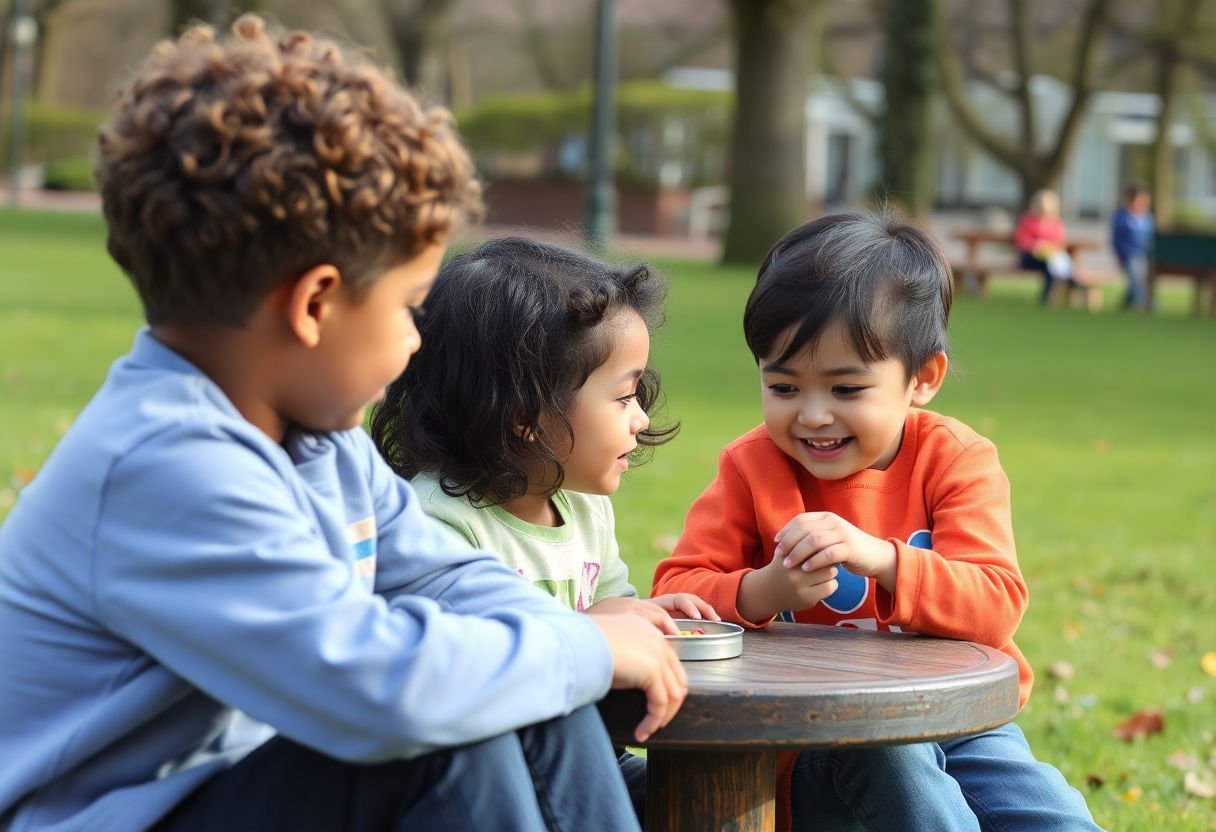
Encouraging outdoor playdates in the park offers an ideal opportunity for children to engage in imaginative play while forming social bonds. Parks provide a versatile backdrop, harnessing the natural environment to stimulate creativity and interaction among children.
Benefits of Park Playdates
- Social Skills Development: Parks are communal spaces where children can interact, fostering essential social skills. They learn to share, communicate, and resolve conflicts in a safe environment.
- Boost in Creativity: The open and diverse settings in parks inspire imaginative play. Children can transform basic elements like trees and benches into castles or spaceships, fueling their creativity.
- Physical Activity: Engaging in outdoor games promotes physical health, with activities like running, climbing, and jumping strengthening children’s physical abilities.
Tips for Organizing Successful Playdates
-
Plan Ahead: Determine a convenient time and choose a park that offers a variety of play options. Ensure the park is age-appropriate and safe.
-
Arrange Activities: Include structured activities such as tag or hide and seek, balanced with unstructured time for free play. This ensures a blend of creativity and social engagement.
-
Invite Diversity: Encourage a mix of children to promote diverse social interaction. This diversity can enrich the playing experience and broaden perspectives.
-
Safety First: Prioritize safety by ensuring adequate supervision and setting boundaries for play areas. Always have a first-aid kit available.
Playdates in the park not only provide essential developmental benefits but also allow parents to connect, fostering a supportive community.
DIY Outdoor Obstacle Courses
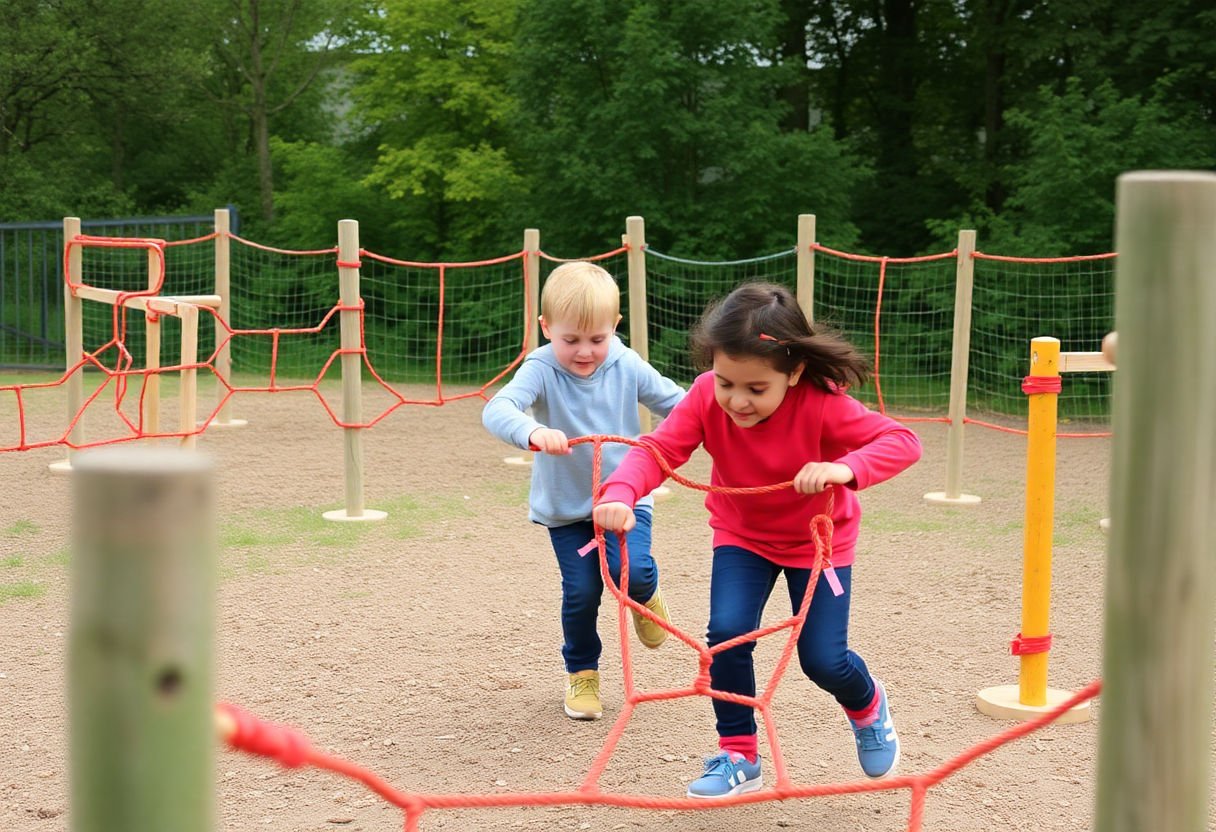
Designing a DIY outdoor obstacle course can transform any backyard into an exciting arena for creativity and physical activity. Children relish the opportunity to navigate challenges and solve problems while honing their motor skills. Constructing an obstacle course doesn’t necessitate expensive equipment; it can be achieved using everyday household items and natural elements found in your garden.
Begin by selecting a safe area where the course can be laid out. The obstacles can include balancing beams made from wooden planks laid over blocks, tunnels created from large cardboard boxes, and marker cones set up for weaving in and out. Encourage kids to assist in the setup, fostering both involvement and inventiveness.
To add complexity, consider incorporating hula hoops for jumping or skipping sections and a rope ladder for climbing or crawling tasks. Be sure to have a variety of heights and difficulty levels to cater to different age groups and abilities.
An inviting feature of DIY obstacle courses is the adaptability they offer. Move and adjust elements for a unique challenge each time, or allow the children to redesign them, encouraging creative thinking and planning.
This active play not only aids in physical development but also enhances cognitive abilities as children strategize to overcome each obstacle. As one parent notes, “Watching them discover new ways to conquer their course is the best part of backyard play.”
Setting a timer or having races can further engage children, promoting not just activity but also healthy competition and teamwork. These courses can be a staple in your child’s outdoor adventures, continually inspiring new feats and fun.
Incorporate Storytelling in Outdoor Settings
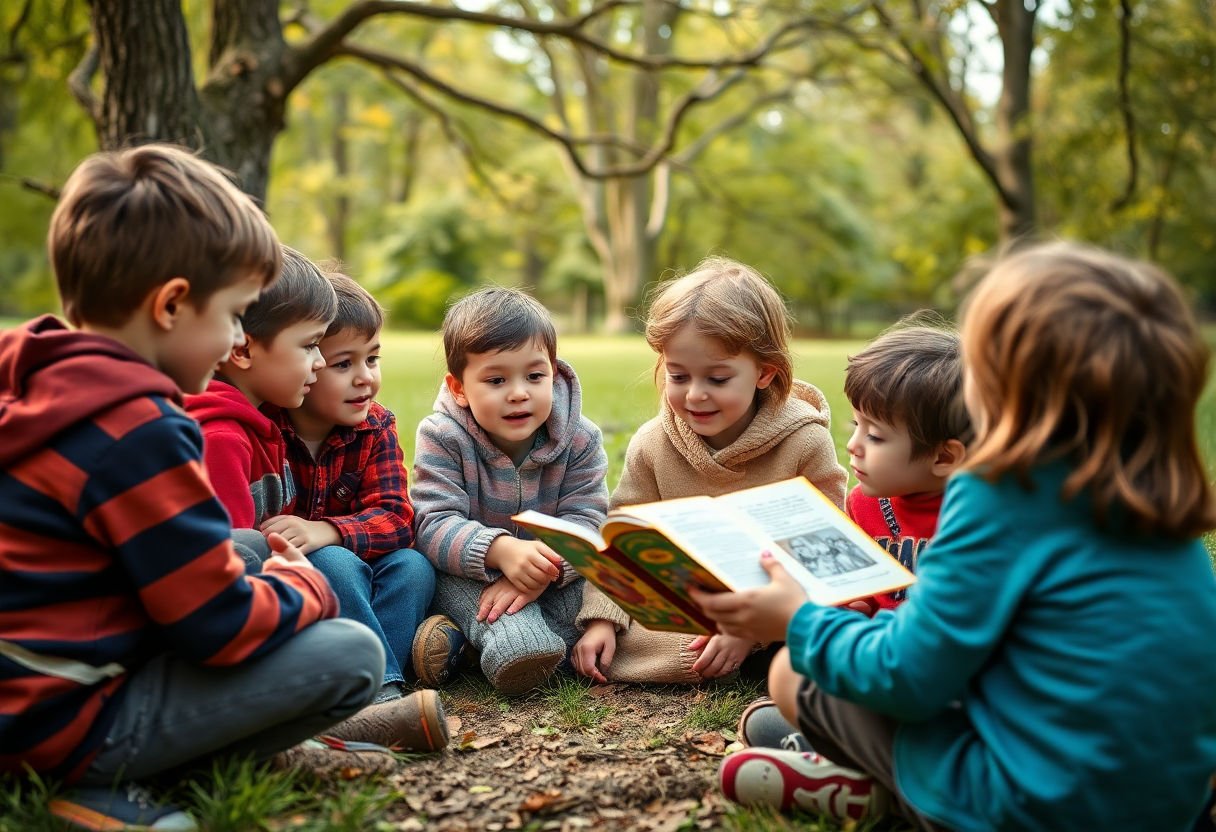
Incorporating storytelling in outdoor settings offers a unique opportunity to ignite a child’s imagination and foster creativity. The natural environment becomes an inspiring backdrop, where the rustle of leaves and tweets of distant birds contribute to the narrative.
Engagement through Nature-themed Stories: Craft stories that intertwine with the natural elements around. For example, narrating an adventure about forest creatures can make surroundings appear more magical, enriching the child’s interaction with nature.
- Key Elements: Incorporate elements such as the changing seasons, wildlife, and plant life.
- Interactive Participation: Encourage children to participate by suggesting plot twists or describing what their characters might do next.
Utilize Props and Surroundings: Use natural materials as props to give a tactile experience. Sticks can become wands, stones can serve as treasure, and hills might transform into mountains in their make-believe world. Such tangible elements enhance the storytelling experience, making it more immersive.
Fostering Creative Play: Through storytelling, children can develop creative thinking and problem-solving skills. Challenges faced by characters in the story can mirror potential real-world scenarios, helping children learn to navigate them with imaginative solutions.
- Promote Social Skills: Group storytelling sessions encourage teamwork. As children share ideas, they learn to listen, collaborate, and build on each other’s thoughts.
Encouraging Empathy through Characters: Stories often introduce characters in various situations, which can help children develop empathy and understanding. They learn to view the world from different perspectives, enriching their emotional intelligence.
In this way, outdoor storytelling not only entertains but also contributes significantly to holistic childhood development.
Hands-On Gardening Activities
Gardening presents a delightful opportunity for children to engage with nature, encouraging both creativity and practical learning. An excellent start is planting a small vegetable or herb garden. Children can learn about the growth cycle of plants, gaining skills in responsibility as they tend to their garden regularly. Imagine the joy of harvesting tomatoes they have nurtured from seed!
For a more artistic approach, consider creating a themed garden, such as a “fairy garden” or a “dinosaur garden.” These themed plots can be dotted with small decorative items and particular plant choices that reflect the theme, allowing children to personalize and creatively manipulate their playground.
Another intriguing option is composting. It introduces kids to eco-friendly practices by demonstrating how organic waste can be transformed back into fertile soil. Kids can observe the process over time, learning about decomposition and sustainability.
Incorporating sensory plants such as lavender, mint, or lamb’s ear makes the garden a multi-sensory experience. Encourage children to touch, smell, and observe these plants, fueling their curiosity and sensory development.
Finally, engage kids with seasonal gardening activities. In spring, they can start seeds indoors and later transplant them. Summer is perfect for outdoor watering and weeding tasks, while autumn provides a chance to gather fallen leaves for compost or mulch.
Through these hands-on activities, children not only understand the basic principles of horticulture but also develop a deeper connection with the environment, enhancing their creativity and sense of wonder.
Explore Outdoor Science Experiments
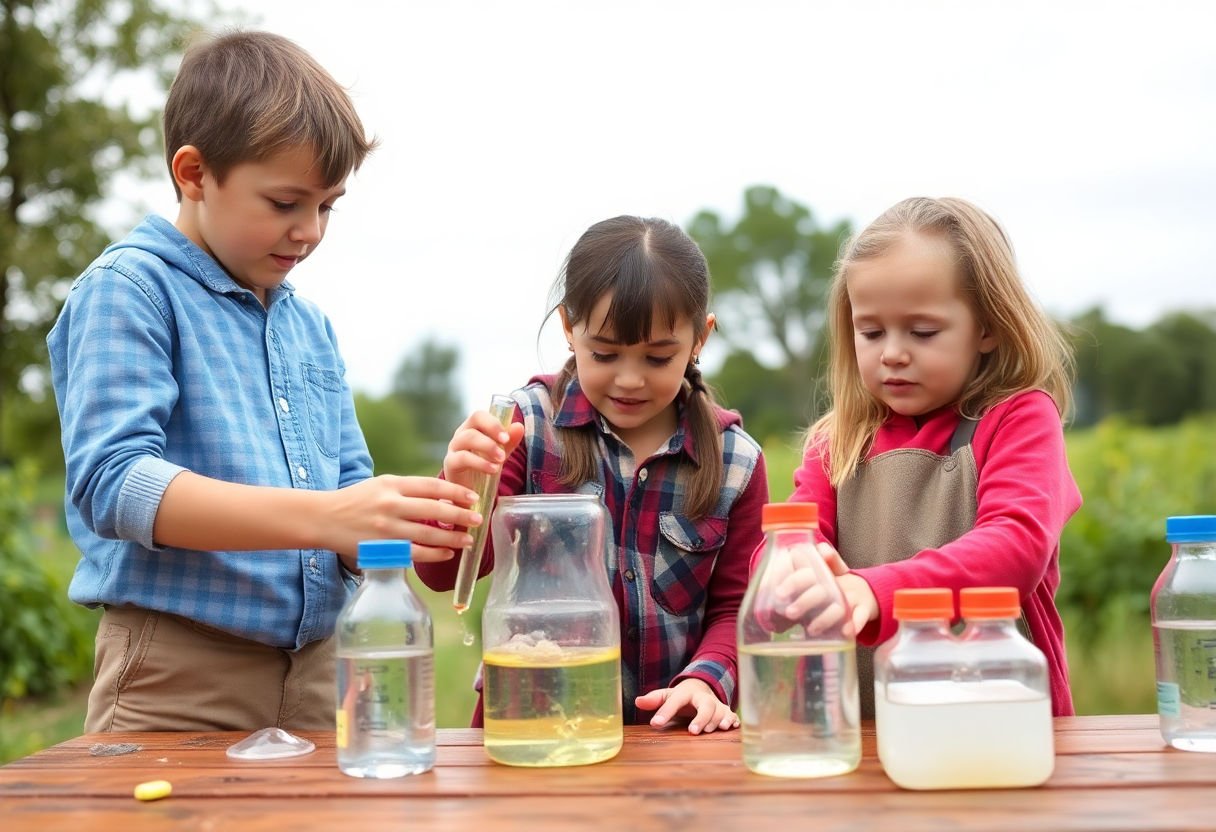
Outdoor science experiments offer children an excellent way to indulge in hands-on learning while engaging with their natural surroundings. These activities do not only expand their scientific knowledge but also nurture essential skills such as critical thinking and problem-solving.
One intriguing experiment is examining the effects of sunlight on temperature using various materials. Simply gather a selection of surfaces such as metal, wood, and plastic, and use a thermometer to measure how the temperature varies on each material when exposed to sunlight for a given period. Discuss the concept of heat absorption and reflection with your children to boost their understanding of physical science.
Another engaging activity is the classic vinegar and baking soda volcano eruption. This experiment, often conducted in the backyard, creatively demonstrates chemical reactions. For an added twist, encourage the kids to collect soil, leaves, and twigs to build a more realistic volcano model, fostering both scientific inquiry and imaginative play.
For those interested in biology, creating a butterfly garden serves as an educational endeavor. Children can learn about metamorphosis by observing caterpillars transform into butterflies. Planting native flowering plants will help attract these majestic creatures, offering insights into ecosystems and pollination processes.
Encourage older children to explore the science of germination by constructing simple terrariums. Observing seeds sprout provides a tangible lesson on plant biology and environmental stewardship, making science both relatable and exciting.
By integrating these outdoor experiments into play, you’re providing an enjoyable and educational experience that stimulates curiosity and lays a foundation for lifelong learning.
Conclusion
In embracing creative outdoor play, we unlock a treasure trove of developmental benefits for children, from enhanced physical health to strengthened social skills. By integrating activities like nature scavenger hunts, artistic creations with natural materials, and outdoor storytelling, we stimulate kids’ creativity and curiosity. As we foster these rich experiences, we not only nurture today’s imaginations but also plant the seeds for a future of innovative thinkers. Parents are encouraged to continue exploring diverse outdoor activities, ensuring that children can enjoy the boundless opportunities that nature provides for growth and joy.
Frequently Asked Questions
How can I ensure my child’s safety during outdoor play?
Safety is paramount during outdoor activities. Ensure the play area is free from hazards like sharp objects and supervise your children at all times. Equip them with gear appropriate for the activity, such as helmets for cycling or sunscreen for sunny days.
How do I keep my child interested in outdoor play?
To keep children engaged, introduce a variety of activities to maintain their interest. Rotate between artistic projects, physical challenges, and educational tasks to cater to their evolving preferences and offer continual stimulation.
What are some basic outdoor games suitable for all age groups?
Engage children of varying ages with simple, inclusive games like tag, hide and seek, or relay races. These activities are not only fun but also promote physical fitness and teamwork, providing valuable opportunities for all participants to enjoy playtime together.
How can outdoor play boost creativity in children?
Outdoor play inspires creativity by offering a dynamic environment full of natural stimuli. These surroundings encourage imaginative thinking, as children invent games, solve problems, and explore their surroundings, which enhances their creative abilities naturally.
How do I get started with organizing outdoor playdates?
Begin by selecting a safe and convenient location such as a local park and coordinate with other parents to find a suitable time. Outline a variety of group activities that promote social interaction, like group scavenger hunts or team sports, ensuring a fun and collaborative experience.
